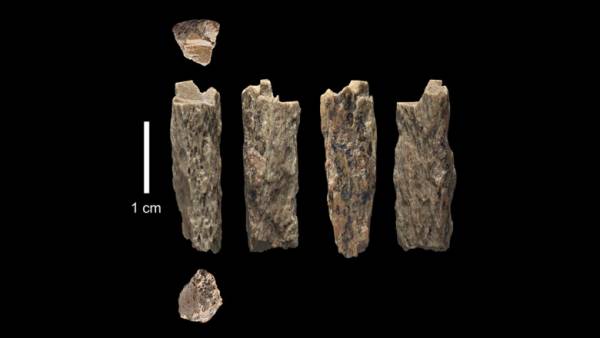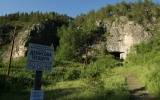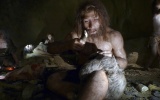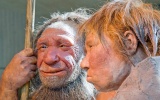Paleontologists have found the Altai Neanderthal hybrid and “Denisova”
MOSCOW, 22 Aug — RIA Novosti. Russian and foreign paleogenetic extracted DNA from the remains of ancient people was found six years ago in Denisova cave in the Altai and found that some of them were “hybrids” of the Neanderthals and the “denisovans”. Their findings were presented in the journal Nature.
Upstairs
“We know that Neanderthals and “denisovans” had to contact each other periodically and to leave offspring. On the other hand, I personally never thought we would be so lucky and we will find the remains of a child whose father was a “Denisova”, and mother — woman-Neanderthal,” said Viviane Slon (Slon Vivien) from Institute of evolutionary anthropology in Leipzig (Germany).
News denisovans loved meat
denisovans loved meat
In December 2010 the famous paleogenetic Svante Paabo announced the opening of the “third” kind of people whose remains one knuckle of a finger was found in the Russian Denisova cave in the Altai. This discovery was made thanks to the “resurrection” of fragments of the genome preserved in three fragments of bone of an ancient man — phalangeal finger bone and two teeth found in the cave.
Initially, scientists believed they found the “denisovans” were relatives of the Neanderthals, who lived in a cave about 50 thousand years ago. It was later revealed that the “denisovans” came much sooner than expected by scientists and was a separate subspecies of humans. Traces of their DNA remains in the genomes of modern Polynesians, Indians of South America and several Nations of Southeast Asia.
Paabo and his colleagues, including academician Anatoly Derevianko and Michael Shunkov from the Institute of archaeology and Ethnography SB RAS, found in the Altai cave is not only the teeth, from which was extracted the genome of the “Denisova”, but also two thousand other bones believed to belong to Neanderthals.
Gradually, the scientists analyzed the remains, extracting DNA from them and comparing them with the genomes of other ancient people. In one of these bones, “Denisov 11”, owned by 13-year-old teenage girl, who died about 90 thousand years ago, they were expecting a big surprise.
News Man survivors: how our ancestors defeated the Neanderthals
Man survivors: how our ancestors defeated the Neanderthals
On the one hand, fragments of mitochondrial DNA, passed from mother to her children, pointed to the fact that the owner of these remains was a Neanderthal. On the other hand, when the scientists raised the rest of the genome of this girl, they found in it traces of Neanderthal and Denisovskaya DNA in approximately equal proportions at 38% and 42%.
Comparing pairs of chromosomes, scientists have discovered that in most cases one of them contained only Denisovskaya genes, and the second their Neanderthal counterparts. It pointed to the fact that the parents of these girls belonged to different types of ancient people, and were not “hybrids” like herself. Accordingly, her dad was the “Denisova”, and the mother was a Neanderthal woman.
Her parents, as noted by Svante Paabo and his colleagues could boast an unusual story of life and origin. For example, the girl’s father was not pure “Denisova”.News lab grown mini-brains Neanderthals
lab grown mini-brains Neanderthals
In the past, 300-600 generations ago, his ancestors had already entered into contact with Neanderthals that left small patches of their DNA in its genome.
The girl’s mother, in turn, was an immigrant — she was closer to the device DNA to the Neanderthals, who lived in a Croatian cave Vindija than Homo neanderthalensis, who lived on the Altai and in Central Asia.